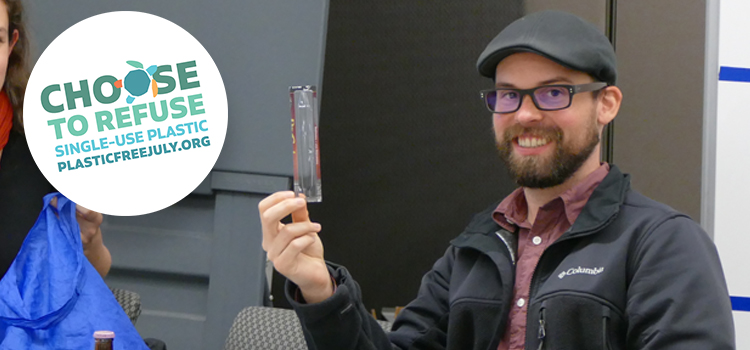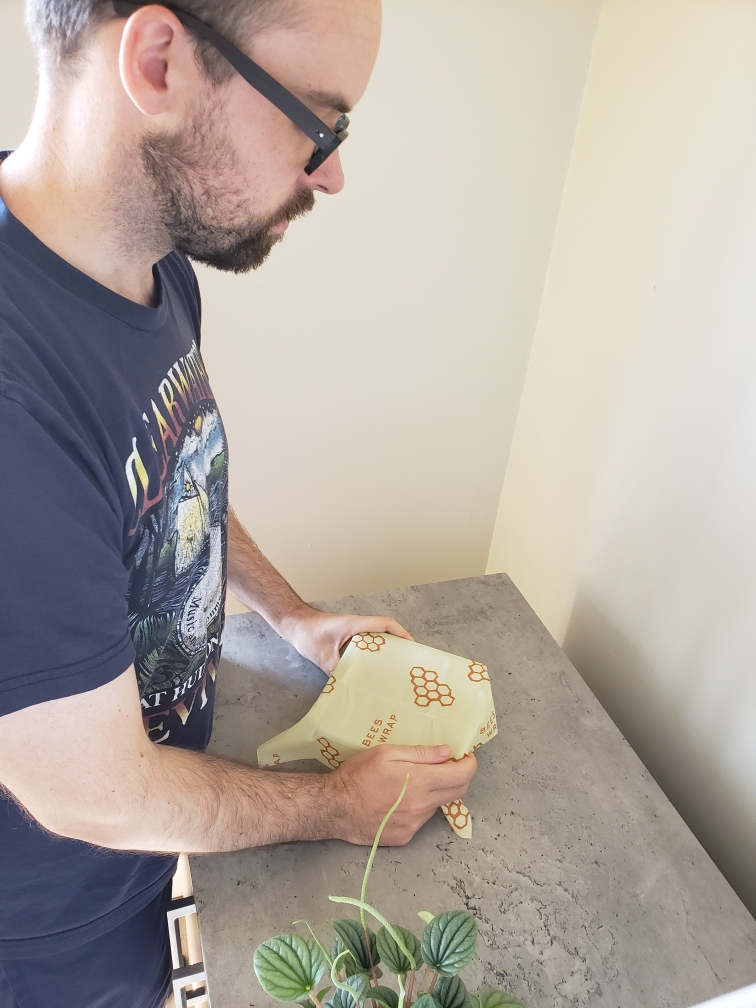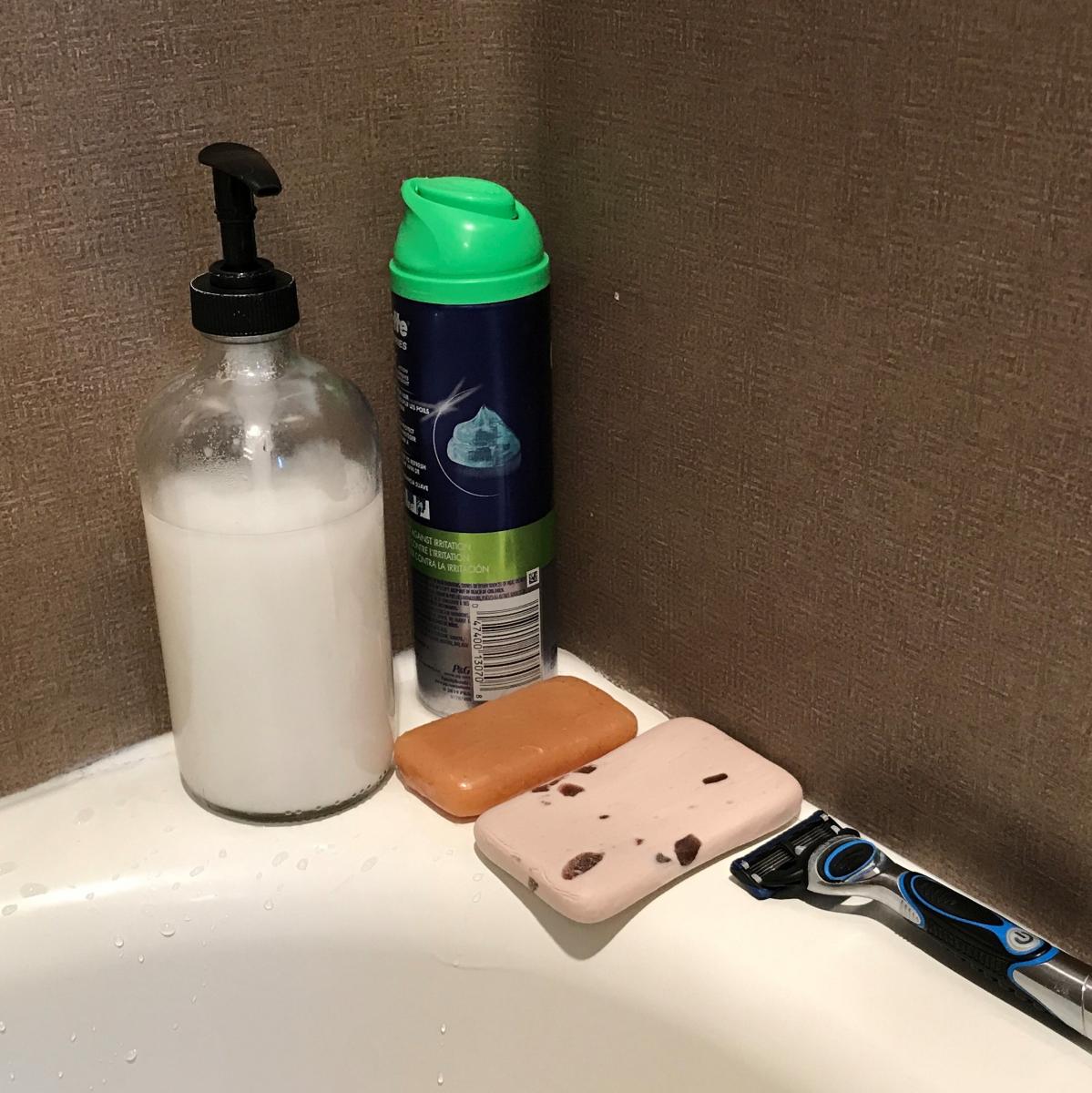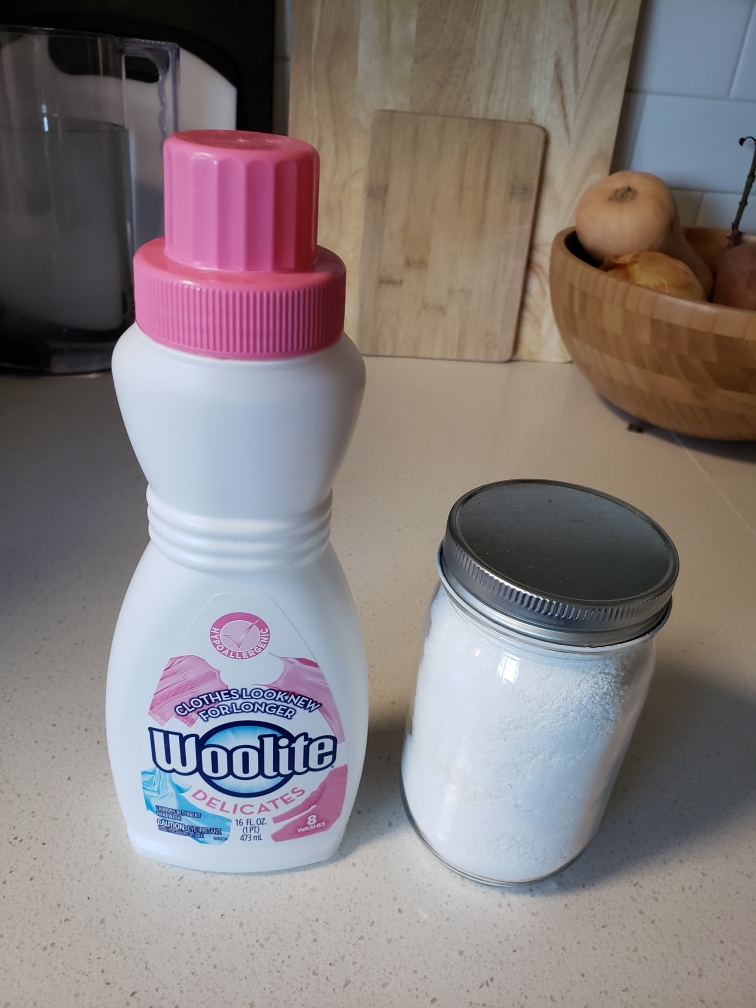
Adam Fehn is a Program Coordinator for UW Recycling. He took a personal challenge to go plastic-free during the month of July.
Why Did I Go Plastic Free?
As a recycling Program Coordinator, I was very aware of the amount and types of plastics I used and I knew that many of those items were packaging and single-use plastics. Like most people, I was caught up in the convenience of a system that perpetuates the cycle of disposable plastics. When I heard that we at UW Recycling were going to start a social media campaign surrounding Plastic Free July, I thought it was the perfect time for me to experiment with going plastic free.
Keep Track and Plan Ahead
As you plan for your plastic-free journey, it’s essential to figure out how it relates to you. I kept track of everything I previously owned or bought in June that had plastic. I also did a personal waste audit by documenting my garbage and recycling.
To make planning easier for me, I kept my data in a spreadsheet and broke it down into categories: food items, kitchen supplies, cleaning supplies, skin care, and plant care (I maintain almost 100 plants in my apartment). My list ended up being over 160 items long, so doing this made it easier to plan how to reduce my plastic use.
Plastic Free July isn’t just about going plastic free for a month, or throwing away all of your plastic on July 1st. It’s about developing habits that let you make more sustainable and ethical decisions going forward. Don’t try to do everything all at once. Instead, it is much smarter to make changes over time. For these reasons, I suggest three guidelines:
- Don’t Compromise on the Important Things
Many plastics in our life, especially involving medical care, are absolutely essential. Don’t refuse a medication, because you’re not able to get it without a plastic bottle. Don’t cut out essential foods in your diet that you can’t safely find a plastic-free alternative for.
- Be Realistic
If there is a product you need and can’t find a suitable plastic-free alternative for, don’t give it up just yet. There were a few things in my life that didn’t have plastic-free alternatives to so I kept using them. I still ended up drastically reducing my consumption of plastic and I kept the possibility of finding a plastic-free alternative in the future.
It’s important to consider that some of the plastic-free alternatives you try will not work for you. Give yourself time to find something that does work.
It makes sense to use up your plastic packaged items before you buy something new. If you have food that is going to expire, don’t throw it out just because it’s in a plastic bottle. Using what you have and replacing it over time is a much better solution.
- Let Yourself Splurge
Much like going on a diet, if you completely cut items you enjoy out of your life, your resolve is likely to weaken. It is important to take the time to figure out which products bring you comfort and why so you can keep them in your life. As long as you practice mindful consumption, this is completely fine! Splurge every once in a while, but maybe swap them for something that is local or more sustainably made to reduce your carbon footprint.
Put Your Plans into Action
The most powerful thing you can do is to reduce your overall consumption. Of the 160 items on my list, I committed to stop buying 42 of them (such as ketchup, ravioli and bread crumbs). This helped in two ways; it reduced my carbon footprint (plastic-free goods still take energy to produce and transport), and it decreased the amount of money I spent.
Purchasing a soap bar wrapped in paper is a logical alternative to purchasing bottled soap and it can be more cost effective in the long run. Buying local also reduces the amount energy needed for transportation, and you’ll be supporting local businesses.
Another option is to find places where you can get items in bulk without plastic. I sourced my laundry detergent and hand soap from a store that has household items in bulk. They gave me glass mason jars for the laundry detergent, which I can use to refill or return to the store for a deposit.
Lessons Learned
The pandemic caused some setbacks in my first week. Stores where I would bring my own bags or containers to shop, now banned them. Take-out restaurants that I knew used all compostable utensils and packaging, ran out due to an unusually high demand.
Food items were the largest category of plastic packaging in my house. Gone were the days when I could simply open up a bag of chips and salsa when I wanted a snack or grab a frozen pizza when I was tired. Going plastic-free gave me an excuse to cook way more than I usually do.
Another great part of going plastic free was the money I saved. I stopped buying junk food, which was normally a weekly purchase for me. There was an initial investment, but the great thing about plastic-free alternatives (such as wool dryer balls and wax wraps) is that most of them are designed to last longer. By purchasing more durable products, I now have to buy those products less often.
Plastic Free after July
Reducing your plastic consumption is something anyone can do and if you plan it right, can be easy and relatively inexpensive. If you start reducing your plastic consumption, it’s an easy jump to reduce your water consumption or another sustainable goal. There’s no need to stop at Plastic Free July! It’s important to take what you learn from this challenge and use it to support state and nationwide initiatives that will reduce waste and greenhouse gas emissions on a large scale. Individual actions feel good, but collective actions create change. If you are ready to get started on your plastic-free journey, visit: https://www.plasticfreejuly.org/
Listen to the Podcast
Learn more about my Plastic-Free July in this episode of UW Sustainability's podcast, "In Our Nature." The podcast starts with UW Recycling Manager Liz Gignilliat talking about why it's important to reduce plastic consumption, the state of plastic at UW and why increased recycling efforts isn't the answer to our plastic problem. The segment about my personal experience starts at the 15:10 mark.